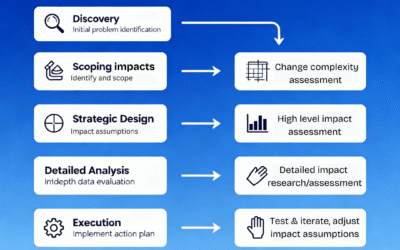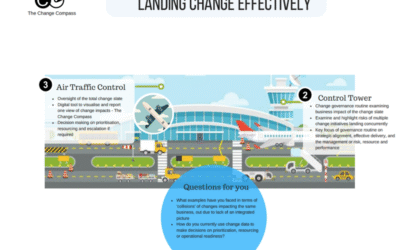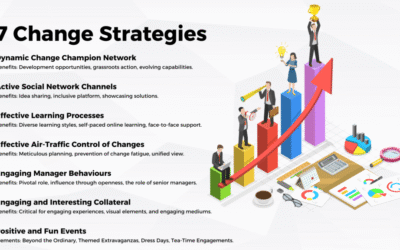I recently went to a concert to see some of the super soul bands of the 70s and 80s including The Jacksons, Sister Sledge, The Village People, and Pointer Sisters. In addition to funk and soul, there was a big component of disco music as well. I started becoming more interested in the history of disco music and how it came about. According to Wikipedia, disco music emerged in the late 60s and 70s and started as a mixture of music from venues popular with African Americans, Hispanic and Latino Americans, Italian Americans, and the LGBT. “Disco can be seen as a reaction to both the dominance of rock music and the stigmatisation of dance music by the counterculture during this period”.
This led me to think more about the dominance of one idealism or concept over others and how limiting it is to only be able to operate with one concept, whether it be dancing or a way of working. I often hear in organizations that we should aim for ‘one-way, same-way to simplify things for people. Do we really think that one way of approaching something is the best for developing that particular capability? And do we really believe that people can only ever handle one way of doing something? Yes, in the beginning, taking a step-by-step process and not introducing multiple concepts may make sense. But in the longer term would we not benefit from different concepts, different methodologies, and different ways of working? (I.e. more diversity vs. no diversity).
Most large organizations are focused on ‘diversity’ within the organization. Diversity can be in the form of gender, sexual orientation, cultural background, age, etc. Having diversity in the organization is premised to provide a richer set of perspectives and points of view and therefore an important part of building talent. Diversity is also critical from a PR and public perception perspective as it paints an image of the type of organization and the types of people in it. For example, a company with a low percentage of women in senior leadership roles or management roles could be seen as one where women may have equal opportunities. The same can also be said for other diverse areas such as age, sexual orientation, and ethnic background.
Why do we need diversity in change management?
Change management, like other disciplines, such as IT management, HR, or Project Management is an area that cannot be fully covered with one singular framework or perspective. Just as there are countless frameworks, concepts, and methodologies in HR so is the case in change management. Models include Kubler-Ross, Lewin, ADKAR, Bridges, Kotter, etc. Different models may suit different types of changes. Please read our article ‘Diagnosing for change‘ on how different change management models may be better for certain types of changes.
By using just one singular model we could be restricting our organization’s change management capability. At university, we study different theories and concepts with the goal that by understanding different approaches, we start to build our understanding of the whole discipline. This allows us to pick and chose one or a combination of different approaches based on the situation. The same applies to change management. It is by understanding different change management approaches that we start to be able to tailor our approaches given any change situation.
For leaders across an organization, many would argue that it is best to provide only one framework or concept for all of change management. If it is really the case that all leaders have never been exposed to any change management frameworks at all (which is unlikely to be the case for large organizations) then starting with one framework may be a good idea.
However, a business leader may need to understand:
- leading people from an engagement and emotional connection perspective
- How initiatives are implemented and their role in it to make it a success
- How to coach others through the change process
- How to track, measure, analyse and report on change and embedment progress
- The art of how to communicate in a verbal and written way using the right words and tone
All of these could have different concepts and frameworks to provide the richness of building understanding and skills. Yes, it is possible to simplify different frameworks and connect them. However, as leaders continue to grow, they will need to be exposed to different concepts and approaches. In the past, projects used a waterfall methodology where tasks were planned in detail and there was little room for plan changes. Now, most organizations utilise some form of agile methodology for many of their projects. For some projects, waterfall methodology may be more appropriate and for others agile. Having diversity helps organizations achieve more successful initiative outcomes.
How do we achieve diversity in change management?
Here are some areas in which to build diversity of thinking and approaches to enrich your organization’s change management capability.
1.Change management frameworks
As mentioned before, having several change management frameworks build a richness of understanding of different approaches
2.Change analytics
Collecting a range of change management data is incredibly valuable. Data on the impact of change across the organization enables leaders to make effective planning, sequencing, and prioritisation decisions on how initiatives should be rolled out. This includes impacts on stakeholder groups such as employees, third parties, partners, and customers. Other data such as change readiness levels for initiatives, initiative benefits, and business performance indicators are critical to ensure initiatives will land effectively.
3.Change leadership
Managing change is a part of leadership. Therefore, just as there is a big range of leadership frameworks so is the case in change leadership. For example, Daniel Goleman’s emotional intelligence, Situational Leadership, Kotter, etc.
4.Change service offering
Providing a rich set of change services can also help build change capability. Change services may include such as:
- Initiative change management
- Portfolio change management
- Change leadership capability development
- Change analytics and decision-making support
- Change coaching for leaders
- Business-as-usual initiative coaching/support
- Change communications support
5.Project delivery methodology
Change management should also be geared to support a range of project methodologies that the organization is using to implement its projects. The richness of being able to flex between different project methodologies means greater value and overall Organizational capability in managing change. Different project methodologies could include:
- Agile – Scrum
- Agile – Kanban
- Lean
- Waterfall
- Prince2






